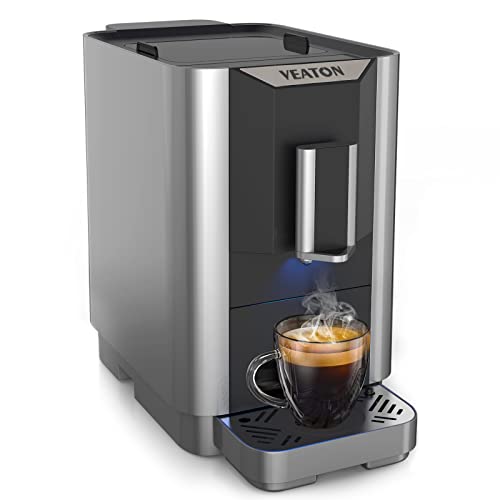How Does Machine Espresso Work?
The machine espresso is made using precise pressure and filtering system that is awe-inspiring to create the coffee you love. What exactly is it?
Espresso is made by forcing hot water under high pressure through finely-ground coffee. The process is similar to making drip coffee, but the key difference is in the pressure.
The Group Head
The group head is the portafilter that you insert when brewing espresso. It disperses the water into the portafilter and regulates the pressure of extraction. There are a variety of types of group head, each with their particular advantages and disadvantages. Some focus on temperature stability, whereas others on pre-infusion features, and others are designed to control the lever. Some are a combination, like the E61. This is a popular choice among baristas as it provides a variety of advantages in one package.
As you can see in the image above The group head features many notches in which you can put your portafilter, then twist it with your hands to lock it in. There is also a gasket made from rubber that is a part of the notches and helps create the seal when you insert your portafilter into the machine. The notches allow for an exact placement of the portafilter. This is essential for an accurate extraction.
The group head not only lets you to place your portafilter easily however it also keeps the same temperature. This is accomplished by cycling hot water around the portafilter and through the brew-basket to ensure that the temperature is always at the right level for extraction. It is important to realize that even a tiny differences can make the distinction between a good and a excellent espresso.
The Pump
Unlike manual piston machines, which rely on a lever that pressurize water, rotary espresso machines rely on motorized pumps to deliver the nine atmospheric bars of pressure needed to extract espresso. The pressure is built by pumping water through a heat-exchanger and then through the ground coffee.
Pumps are typically less expensive than piston-driven machines, and they tend to last longer. However, both types of machines may degrade with overuse and insufficient cleaning. They also increase the complexity of mechanical systems, which can result in costly prices for even the simplest models.
Certain espresso machines utilize steam pressure instead of a pump to brew espresso. This can cause over-extraction because the boiler that produces steam also warms the water to boil. Additionally, these machines frequently have to restore their pressure between cups, which takes time and energy.
A majority of espresso machines use an rotary or vibrating pump, with a vibrating model that uses a vibrating disc to generate the pressure, and rotating models that push hot water through the grounds under high speed. Both models can make excellent espresso, however rotary machines are quieter and more durable than vibration pumps.
The Boiler
The boiler is the one that is used to heat the water to the right temperature to extract. The resulting steam reaches the portafilter which holds ground espresso beans and is then pumped down into the cup. The steam is able to create enough pressure to push the grounds of the coffee through. espresso makers creates a crema on top of the espresso. This is one of the hallmarks of a great espresso.
There are three different types of espresso machines, each with different pumps and the temperature of the brew. There are different ways to control the brew as well as the size of the cup that can be produced by the machine.
The first espresso machines were steam-type. The first espresso machines were steam types. The coffee tasted bitter and burnt. This is why the Milanese makers Luigi Bezzerra and Desiderio Pavoni created the modern espresso machine.
The most popular espresso maker is a semi-automatic device that has an electric pump. When people think of espresso machines, they imagine these machines. If you have a semi-automatic machine you have to grind the beans and tamp them by hand, but the pump is able to regulate the flow of water and pressure. This is a great compromise between the human touch and the mechanised quality.
The Filter
Espresso machines usually use a filter that separates the coffee grounds from the hot water. The filter is also an essential component of the machine's temperature control, as it helps prevent overheating.
A filter also improves flavor because it allows for a longer flowering phase. This allows the beans to release their flavor and gives the chance for better extraction.
It is important to remember that even the finest filter can result in a bad cup of coffee. The quality of the beans and the extraction process, remain vital.
This is where the magic happens. It's what makes an espresso really taste good. The grouphead (also known as the brewhead) is where you put the portafilter, the device which you put the grounds of your coffee into when making espresso.
Steam-driven espresso machines use hot water heated in an airtight vessel to create steam. The steam then pushes hot water through the grounds of coffee at high pressure. These kinds of machines tend to be cheaper and easier to maintain than pump-driven models. However, they are not as efficient in their capacity to create the perfect brewing conditions as they only operate at 1-1.5 bars of pressure. While the perfect shot requires 9-10 bar.

In recent years, compressed air pump-driven espresso machines have become more popular. They make use of an air compressor to push hot water through the ground, and are more mobile than electric steam-driven espresso machines.
